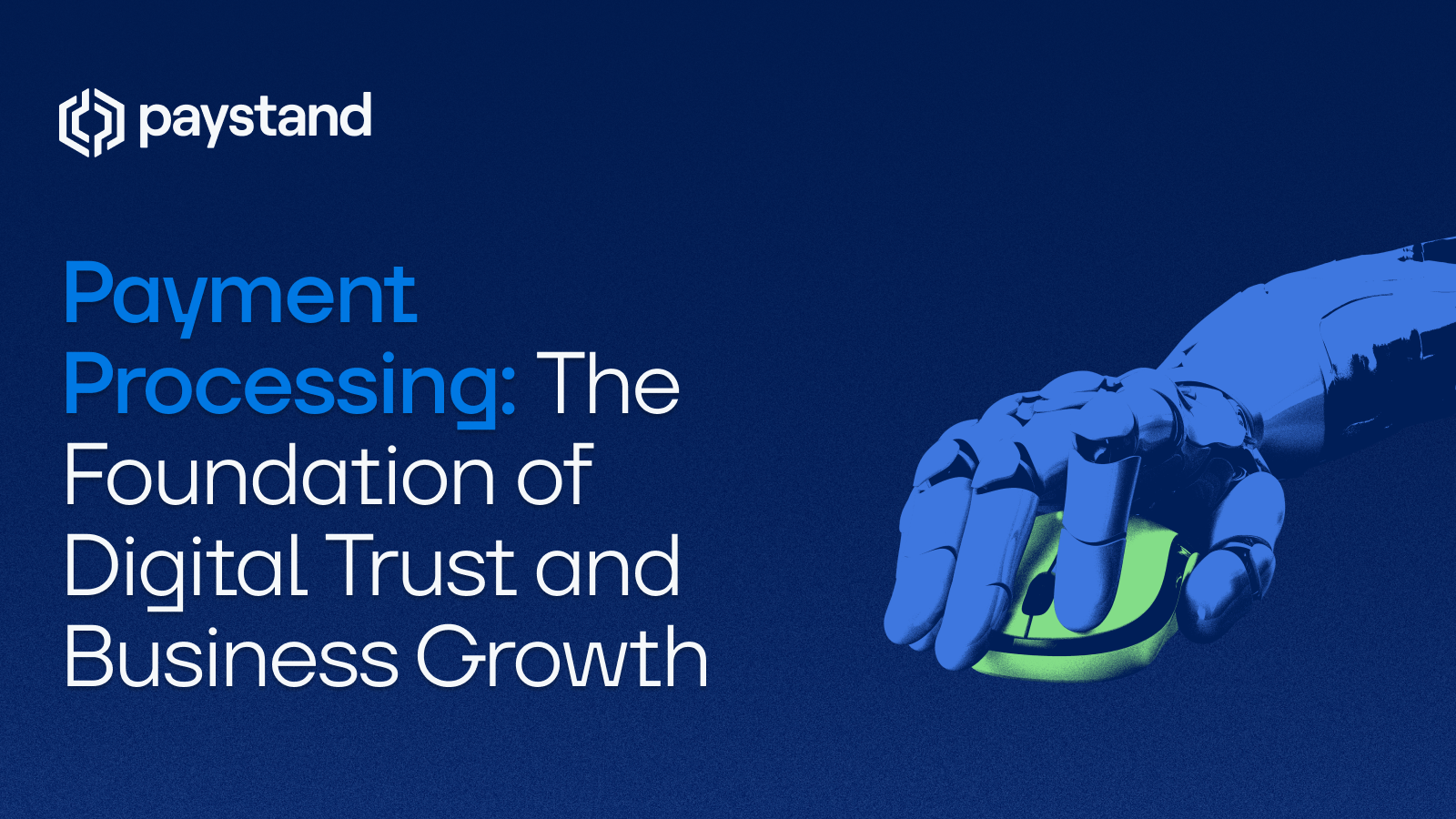Payment Processing: The Foundation of Digital Trust & Business Growth

Table of Contents
- How Payment Processing Works
- Understanding the Payment Processing Ecosystem
- Key Components of Payment Processing
- Common Payment Processing Solutions for Businesses
- Best Practices to Optimize Payment Processing Efficiency
- Powering the Future of Business with Paystand
Key Takeaways
- Modern payment processing drives digital trust and operational scalability.
- Automation, real-time data, and transparency are the cornerstones of innovation.
- Businesses that modernize their systems gain faster cash flow, fewer errors, and lower costs.
Modern payment processing services are no longer just about completing transactions. They’ve evolved into the backbone of digital trust, business growth, and financial automation. By combining real-time data, transparency, and automation, today’s payment systems empower businesses to operate more efficiently and scale confidently.
How Payment Processing Works
Modern payment processing goes beyond simply moving money; it’s about creating seamless, trusted digital experiences. Whether through online payments, mobile payments, or credit and debit cards, every transaction involves multiple layers of authorization, verification, and settlement.
Here’s how it works:
- Authorization: The customer’s card details are securely sent to the payment processor.
- Authentication: The issuing bank verifies available funds or credit.
- Clearing: Approved transactions are recorded and queued for settlement.
- Settlement: Funds are transferred to the merchant’s account.
This real-time process ensures payments are secure, accurate, and frictionless — supporting both customer trust and operational efficiency.
Learn how this scales for larger enterprises in Enterprise Payment Processing.
Understanding the Payment Processing Ecosystem
Every credit card payment processing network depends on a collaborative ecosystem:
- Payment Gateways: Approve or decline transactions in real time.
- Payment Processors: Handle data transfers between banks and merchants.
- Merchant Accounts: Temporarily hold funds from approved transactions.
- Issuing Banks & Card Networks: Entities like Visa and Mastercard that enable global digital transactions.
Automation and AI-driven verification are redefining how payments flow—making the ecosystem faster, safer, and more transparent. Learn more about this evolution in Digital Payments.
Key Components of Payment Processing
The foundation of efficient payment systems rests on security, automation, and transparency:
- Security & Compliance: PCI-compliant infrastructure protects every transaction.
- Automation: Reduces manual work in AR, reconciliation, and fund transfers.
- Data Transparency: Real-time dashboards provide instant insight into cash flow.
- Multi-Channel Flexibility: Support for mobile payments, credit card payments, debit card payments, and EFT ensures accessibility across all touchpoints.
Want to create a frictionless customer experience? Read Frictionless Payments Experience.
Common Payment Processing Solutions for Businesses
Businesses today can choose from several payment processing solutions, each with its own strengths:
- Credit and Debit Card Payments: Ideal for fast, secure transactions. Learn how to manage fees in Credit Card Processing Fees.
- ACH & EFT Transfers: Lower-cost methods that reduce dependency on card networks.
- Mobile Payments & Digital Wallets: Enable instant, user-friendly transactions.
- Automated B2B Payment Platforms: Streamline AR, automate reconciliation, and reduce processing time.
These technologies integrate to form a unified, real-time payment infrastructure—fueling both growth and customer satisfaction.
Best Practices to Optimize Payment Processing Efficiency
To maximize the impact of your payment processing service, adopt these best practices:
- Implement Secure, Real-Time Payment Systems: Protect card details and enhance trust.
- Automate Accounts Receivable: Minimize errors and accelerate cash flow.
- Reduce Processing Costs: Favor EFT and ACH over higher-fee credit card networks.
- Enhance Transparency: Provide customers and teams with real-time visibility into payment statuses.
- Adopt Strong Payment Authentication: Learn more in Payment Authentication.
These practices not only increase operational efficiency but also reinforce digital trust with every transaction.
Powering the Future of Business with Paystand
Paystand is redefining how businesses approach payment processing. Our platform automates AR, eliminates unnecessary fees, and provides real-time visibility into every transaction.
With Paystand, you can:
- Accept online payments, mobile payments, and credit or debit cards with ease.
- Gain actionable insights through real-time data dashboards.
- Build digital trust with a secure, transparent payment infrastructure.
Download the 2026 B2B Payment Trends Report to see how forward-thinking businesses are transforming their financial operations.







%20(1)%20(1).jpg?width=100&height=100&name=IMG_3752%20(1)%20(1)%20(1).jpg)